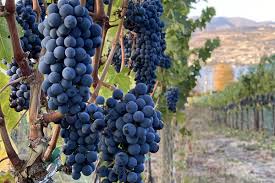Stamp: Wine-grower (Liechtenstein 1927)
Wine-grower (Liechtenstein 1927)
01 January (Liechtenstein ) within release Wine-growers and Vaduz castle goes into circulation Stamp Wine-grower face value 7½ Swiss centime
| Stamp Wine-grower in catalogues | |
|---|---|
| Michel: | Mi:LI 67 |
Stamp is square format.
Also in the issue Wine-growers and Vaduz castle:
- Stamp - Wine-grower face value 2½;
- Stamp - Wine-grower face value 7½;
- Stamp - Wine-grower face value 15;
|
Data entry completed
53%
|
|
|---|---|
| Stamp Wine-grower in digits | |
| Country: | Liechtenstein |
| Date: | 1927-01-01 |
| Perforation: | 11¾ |
| Emission: | Definitive |
| Format: | Stamp |
| Face Value: | 7½ Swiss centime |
| Print run: | 123034 |
Stamp Wine-grower it reflects the thematic directions:
Agriculture is the cultivation and breeding of animals, plants and fungi for food, fiber, biofuel, medicinal plants and other products used to sustain and enhance human life.[1] Agriculture was the key development in the rise of sedentary human civilization, whereby farming of domesticated species created food surpluses that nurtured the development of civilization. The study of agriculture is known as agricultural science. The history of agriculture dates back thousands of years, and its development has been driven and defined by greatly different climates, cultures, and technologies. Industrial agriculture based on large-scale monoculture farming has become the dominant agricultural methodology.
A profession is a field of work that has been successfully professionalized. It can be defined as a disciplined group of individuals, professionals, who adhere to ethical standards and who hold themselves out as, and are accepted by the public as possessing special knowledge and skills in a widely recognised body of learning derived from research, education and training at a high level, and who are prepared to apply this knowledge and exercise these skills in the interest of others
Viticulture (Latin: vitis cultura, "vine-growing"), viniculture (vinis cultura, "wine-growing"), or winegrowing is the cultivation and harvesting of grapes. It is a branch of the science of horticulture. While the native territory of Vitis vinifera, the common grape vine, ranges from Western Europe to the Persian shores of the Caspian Sea, the vine has demonstrated high levels of adaptability to new environments, hence viticulture can be found on every continent except Antarctica.



